This article is part of the Under the Lens series
Community Ownership Takes Center Stage
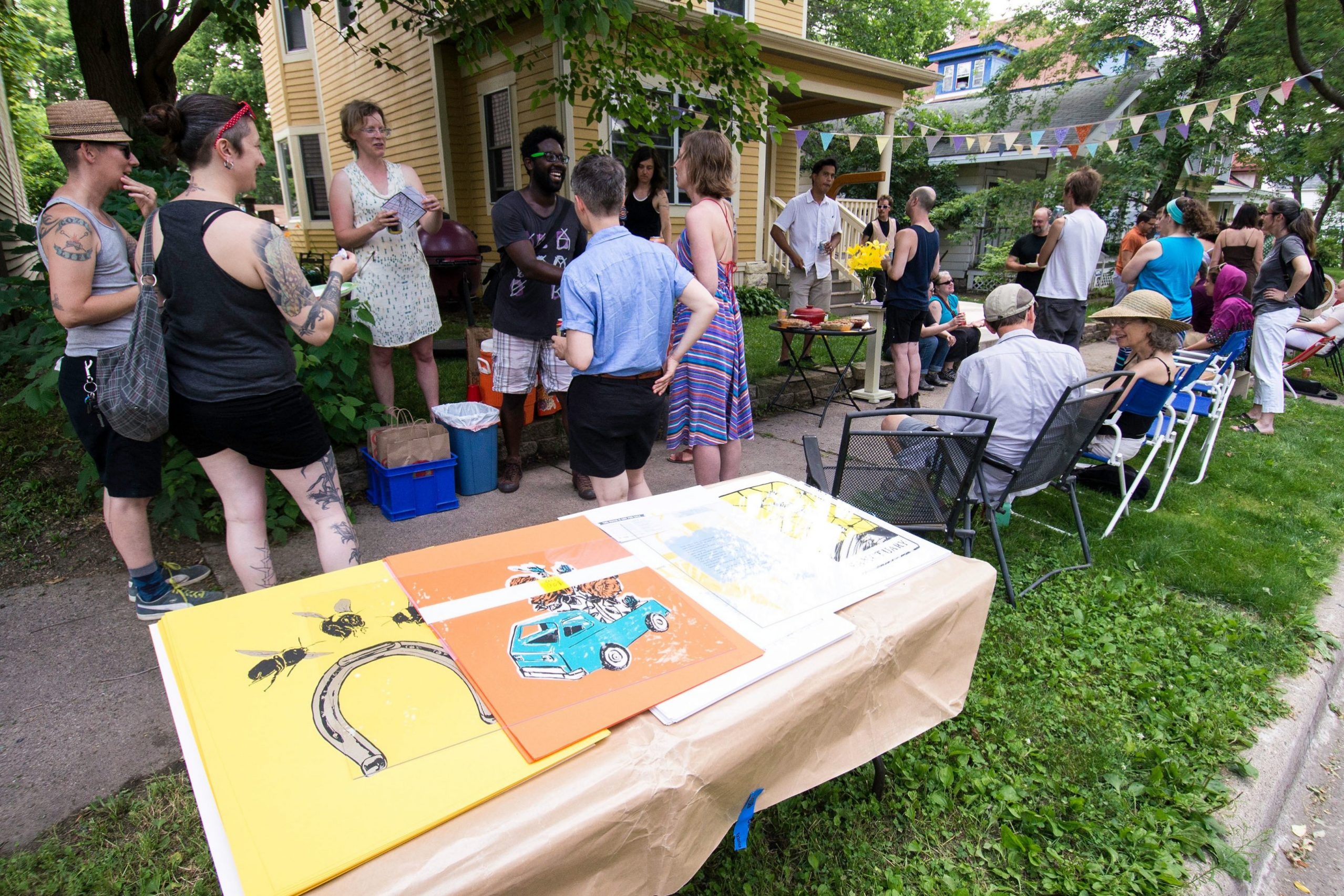
A community event in front of a City of Lakes Community Land Trust home. Photo courtesy of Bruce Silcox
This is no longer my neighborhood.”
Too often, communities of color that experience new investments report that the changes are a detriment to their lives, and a benefit to newcomers, who tend to be more affluent and often predominately white households. Residents of color can experience social and cultural alienation and a loss of political influence.
The community land trust (CLT) model attempts to address both the perception and the reality of these shifts in power and culture by placing the residents of homes on the CLT’s land in key leadership and decision-making positions and by putting the needs of low-income residents at the center of the CLT’s mission. Importantly, most CLTs are membership based, with the membership electing the board and having direct say over land disposition.
|
|
A major debate among CLT practitioners and advocates involves the tradeoffs and tensions between “going to scale” with the housing portfolio and enacting “community control.” People on one side of this debate make the case that increasing the number of homes held in trust is necessary, both for CLTs’ financial sustainability and for the production and preservation of mixed-income communities. The other side argues that ever-increasing scale may inevitably erode the community’s and local residents’ control in decision making—a vital part of the CLT governance model.
Making straw men of scale and community control and pitting them against each other does the field more harm than good. Instead, we at Grounded Solutions support reconciling and balancing the two goals to create more comprehensive CLT-based approaches that advance racial justice and inclusive community development.
Meet the Straw Men
In the debate over whether CLT practitioners and advocates should focus on community control or scale, one side says that getting too big in certain ways, especially expanding across geographies bigger than a couple of neighborhoods, is antithetical to community control. Grassroots groups taking this position tend to minimize efforts to build the resource systems and infrastructure that CLTs need to develop and grow their impact (e.g., enabling public policies, a pipeline of real estate assets, and financing) because these activities are perceived as removed from the communities the groups are trying to serve.
On the other hand groups that focus solely on scale tend to minimize community organizing and planning, resident empowerment, community ownership, and authentic place-based leadership of the CLT, often claiming that the time and processes needed to cultivate real community control are a barrier to achieving scale.
The former approach fails to achieve the accumulation and development of enough land to foster organizational stability or have notable effects on housing markets. The latter approach fails to achieve enough resident empowerment and decision making to ensure that cultural and political displacement are prevented.
Two trends in current CLT development efforts exacerbate the debate. One is that more and more grassroots community groups are interested in bringing community land trusts to their communities. These grassroots efforts often are highly effective at organizing the community and garnering resident-driven plans for the CLT, but they rarely succeed in obtaining land and bringing development to fruition; when they do, it is often as a one-off small development, or a couple of homes per year. In these cases, the community organizers often misconstrue the CLT model as “operating outside of the market.” They don’t accept the fact that developers, government staff, and real estate and housing investors are vital partners for obtaining land and funding and for financing CLT community assets—just as for all affordable housing development. The more grassroots CLTs also fear that scaling their organization will mean sacrificing neighborhood-based decision making. Ironically, this stance can result in community residents losing the ability to control neighborhood land. If the resulting organization is not able to sustain itself or finance the desired land purchases and uses, the disappointment and distrust that follows may (unjustly) be attached to the CLT concept rather than its implementation.
Another trend is that some CLTs are being successfully established as “programs” operated by nonprofit organizations, or even governmental entities. Sometimes these programs are adept at obtaining land and producing affordable housing, but they lack meaningful community control and resident authority because they’re not governed by a corporate community membership and have no community residents or leaseholders on their boards. Because the parent nonprofit has other lines of business and existing bylaws that compete for representative governance, community control of the CLT gets scant attention, or superficial community engagement is deemed sufficient. In the worst cases, a nonprofit takes the paternalistic or racist stance that facilitating authentic community control would hinder the pace of developing and scaling up the community land trust.
Scaling Up Community Control
Scale is not the enemy of community control; nor is community and resident leadership the enemy of scaling up the number of permanently affordable homes. Without community buy-in and accountability, the resources and will to scale up will not persist, which in turn means that permanently affordable homes are unlikely to be created and preserved.
Land is power, and people united is power. Hence, we need to adopt an approach that advances both control of land at scale and democratic community decision making to achieve gains for residents, neighborhoods, cities, and society. Under a CLT approach that gives equal priority to community control and impact from scale, the systems and structures of land use policy and the housing finance and real estate industries may be fully utilized, so that communities can gain land in trust and hold CLTs accountable to their mission, even when scaled.
If lower-income residents and residents of color are in control of land, then the CLT holding that land in trust can support the mobilization and empowerment of those residents and the broader community to demand more land and resources from public and private entities and enable development to fulfill the needs of more residents.
CLTs Realizing a Reconciled Approach: Three Examples
The three CLTs that we profile here were developed at different times by diverse actors that have, or are working to adopt, approaches that concurrently prioritize community control and scaling up. Dudley Neighbors is the story of a grassroots organizing effort that created a CLT subsidiary to pursue land acquisition with community control, recognizing that residents needed to gain some control over the fate of their neighborhood. City of Lakes Community Land Trust is the story of a coalition that formed and decided a citywide CLT was needed, leading to the mobilization of communities across neighborhoods and, ultimately, formation of a new community around the CLT’s mission and governance. In this example, a network of CLTs across the state, along with residents and community stakeholders, effectively fosters resources. Houston Community Land Trust is the story of a local government that is bringing political will, land, and major financial resources to the table, making achievable an idea for a CLT brought forward by community groups.
These cases illustrate how CLTs can maintain a balance between scale and community control.
Dudley Neighbors Inc. and Dudley Street Neighborhood Initiative
The Dudley and Roxbury neighborhood in the city of Boston experienced extreme disinvestment in the 1970s and early 1980s. The poverty and unemployment rates for residents there were almost double those of the rest of Boston. Real estate development stopped in the neighborhood, while slumlords and speculative land owners moved in to make money from operating unsafe, substandard housing and holding land. Meanwhile, waste haulers and other private companies illegally used vacant parcels as their dumping grounds.
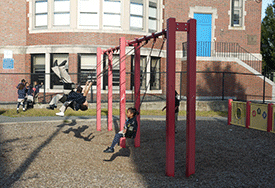
Children on the playground the Dudley Charter School in Boston. Photo by Ruis DeTeresa, via flickr, CC BY 2.0
By the mid-1980s, residents had had enough. In 1984 they formed the Dudley Street Neighborhood Initiative (DSNI), a community-based planning and organizing nonprofit, to reclaim their neighborhood. DSNI’s mission is “to empower Dudley residents to organize, plan for, create, and control a vibrant, diverse, and high-quality neighborhood in collaboration with community partners.” By the late 1980s, Dudley residents had completed a comprehensive planning process to address the 1,300 parcels of abandoned land in the neighborhood. The city of Boston adopted the plan, which included the creation of a community land trust called Dudley Neighbors Inc. (DNI), a subsidiary of DSNI.
In a historic act of relinquishing control to an organized community, the city granted
DNI the power of eminent domain for abandoned properties within the 62 acres of the Dudley Triangle sub-neighborhood area. The community land trust hired staff, including neighborhood residents and people with experience in financing and development, and began implementing the community’s plan. Today, DNI holds more than 30 acres of formerly vacant and abandoned land in trust. This land now includes 237 affordable homes—some shared-equity homeownership and some rentals—as well as commercial space, a commercial greenhouse, an urban farm, and gardens, parks, and playgrounds.
DSNI, DNI’s parent organization, has a 34-member board elected by the neighborhood. Sixteen board seats are set aside for representatives of the primary racial and ethnic groups that reside in Dudley, four each for Blacks, Latin Americans, Cape Verdeans, and whites, and three board seats are for youth representatives. Electing the land trust’s board directly as well might generate election fatigue, so the elected DSNI board appoints six out of the nine members of DNI’s board; four of those must live or work on the land in trust. The remaining three seats are appointed by the district’s state legislators (who are themselves nonvoting board members), city council member, and mayor.
DSNI continues to conduct community planning and organizing, foster youth and resident leadership development, raise funds, and facilitate training and community-requested programs. DNI continues to acquire land, oversee development, and steward a growing portfolio on behalf of the community.
DSNI/DNI is an example of a community land trust that has kept resident control of land at the forefront without sacrificing scale in its land holdings. It has focused on an idea of scale that involves a critical mass of land within a single neighborhood, with community control vested in residents of that neighborhood through DSNI. DNI controls almost half the land in the Dudley Triangle, and houses about one-quarter of its households. (It owns about 3 percent of the land and houses about 3 percent of the households in the wider 1.3-square-mile Dudley neighborhood.) DNI continues to bring more land into the trust but remains focused on the same geographic area. Bringing more land into its portfolio so it can enact residents’ vision for the area is a primary driver for continued community organizing.
Being a major landholder gives the community power to control what their neighborhood and lives become and being an organized community gives them political power and influence to garner additional resources and support. Because of the ongoing representation and organizing maintained by DSNI, neighborhood residents have retained the power to control development activities in the Dudley neighborhood through the formal review and approval of all new projects.
Once deemed “undesirable” and “blighted,” the Dudley neighborhood now faces encroaching pressure from private development. Luckily, through the land trust, the community continues to have the right to claim vacant land, and community control continues to grow stronger. Dudley is now a mixed-income, racially diverse community that practices neighborly engagement and collective advocacy to attract resources, influence private real estate developers, maintain political will, and position longtime residents as the leaders and beneficiaries of community change. Because the community land trust ensures that there will always be homes for lower-income households, the neighborhood should remain economically and racially integrated.
(For more on DSNI’s history, see Peter Medoff and Holly Sklar, Streets of Hope: The Rise and Fall of an Urban Neighborhood, and Holding Ground: The Rebirth of Dudley Street, directed by Leah Mahan and Mark Lipman.)
City of Lakes Community Land Trust
As the Minneapolis housing market began to heat up in 2001, driven by growth in population without sufficient housing supply meeting demand, a larger proportion of households needed affordable housing. A coalition formed in South Minneapolis that included the Powderhorn Residents Group, Seward Redesign , Powderhorn Park Neighborhood Association, and the Lyndale Neighborhood Development Corporation. Through research and community meetings, coalition members realized that the entire city could benefit from a community land trust. They incorporated the City of Lakes Community Land Trust (CLCLT) in 2002.
As a citywide rather than neighborhood-based community land trust, CLCLT took a different approach to engaging residents and fostering community control. CLT staff conducted intensive education and outreach to neighborhood associations and community groups, presenting the land trust as an asset or tool residents could use if they felt pressure from outside development, without requiring any local resources. As Executive Director Jeff Washburne said in a 2007 interview: “In more than one instance, neighborhood groups have told developers to talk to us before the groups would agree to move forward on a project.”
City of Lakes CLT has a 15-person board, one-third of which is lessees and one-third other community members. As of 2019, approximately 350 community members across Minneapolis, along with the residents living on land in trust, made up the membership. By the end of 2018, CLCLT had 272 homeownership units and four rental units maintained as permanently affordable in the trust and was on track to have about 40 more homes for sale. The proportion of CLCLT homeowners who are people of color was 53 percent, compared to only 24 percent of all homeowners in Minneapolis.
[RELATED: Exploring Foreclosure Through Art]
As the CLT’s portfolio and number of residents have increased and the organization’s relationships in the surrounding areas have grown, a broader community of residents, stakeholders, and supporters has formed around the City of Lakes that helps to drive its success. CLT residents have testified in public, at budget hearings, and to their city council to ensure that resources are maintained for affordable housing and directed to shared equity homeownership. Residents and community members show up when mobilized by the CLT for advocacy, and they open their homes and share their stories with policymakers and prospective funders.
Just as important, City of Lakes CLT joins with other CLTs across the state to promote partnerships and resources through the state housing finance agency, Minnesota Housing, which provides subsidies to CLTs through grants and mortgages for CLT homebuyers.
“When we started this work, racial equity and displacement were not being talked about, so we couldn’t really lead with that kind of message,” Washburne observed in 2019. “Sixteen years later, we lead with the importance of community control of land for racial justice.”
Now community members are calling upon the CLT for two new endeavors. One involves acquiring or creating commercial developments to be held in trust. Second, tenant advocacy groups have asked the CLT to explore the creation and preservation of limited-equity cooperatives on land held in trust.
Washburne sees the community requests as evidence of success. “We want more grassroots groups telling us where to go and what to do,” he says. “We want them to drive, and we’ll be the horsepower.”
City of Houston and the Houston Community Land Trust
As the benefits of community land trusts have gained attention, a growing number of municipalities have taken a lead role in launching new CLTs. One is Houston. Nonprofit organizations and neighborhood groups in Houston, including Row House Community Development Corporation and Emancipation Economic Development Council, began exploring the CLT concept in 2015 as a way to address mounting concerns over realized and anticipated increases in housing values and displacement in predominantly Black neighborhoods. Residents of the Third Ward, for instance, saw housing values climb 176 percent from 2000 to 2013; more recently, high-end development came with a $34 million redevelopment of Emancipation Park. Listening to residents and community leaders, the city worked with Grounded Solutions Network to explore and plan for a community land trust.
After Hurricane Harvey, the city’s Housing and Community Development Department realized that the CLT might be a critical tool during rebuilding to serve lower-income families and communities of color who were displaced or whose neighborhoods were destroyed by the storm, and to help rebuild Houston neighborhoods with racial equity and economic integration. It worked to align other local resources, policies, and tools to support the future CLT. This effort included using the Houston Land Bank to usher properties over to the community land trust and planning to bring multimillion-dollar funding to CLT development through Tax Increment Reinvestment Zones. After working with Grounded Solutions and other consultants to build out the framework and business model, the city then created a new nonprofit organization, the Houston Community Land Trust.
City leaders realized that the CLT could not be a governmental entity; rather, it had to be an independently governed nonprofit and advocate on behalf of the communities where it works to ensure the CLT would be sustainable through political change. In partnership with community stakeholders, city staff held community events to inform and gather input from community members. Over the course of 2018, a board of directors was recruited, the first two staffers were hired, and the Houston Community Land Trust sold its first three homes. The CLT now has 34 homes on land in trust and intends to bring 200 units into its portfolio in the next two years. Meanwhile, staff and board members continue to convene public education events, conduct outreach to resident groups, and build relationships with leaders in the neighborhoods where the CLT will work.
Houston CLT is positioned to be one of the fastest-growing CLTs in the nation, as measured by unit counts, due to the enabling policies, resources, and other support provided by the city. However, because it didn’t start from an already organized base, building resident leadership and community control as it grows and works in different neighborhoods across Houston may be daunting. Similar to City of Lakes CLT, the intent is to partner with community organizations and neighborhood groups, offering a tool that communities can deploy to build high-quality, affordable housing that will last in disinvested or disaster-hit areas and in areas facing displacement pressures. Over time, the CLT plans to recruit members and adopt a new board structure (once it has residents), ensuring resident leadership and representation from the various neighborhoods where it holds land in trust. The CLT also plans to organize and mobilize communities to ensure that the resources and political will for community control of land in trust creates a mixed-income, racially integrated Houston that lasts long into the future.
Lessons Learned
Community engagement and control will manifest differently due to varying context—Because of the differences in how each of these CLTs was established, “community” is defined differently and, therefore, “community control” is manifested differently—at least in part—in each example.
Part of the difference lies in how residents and other members of the community interact with the community land trust. For the Dudley Neighborhood Initiative, residents of the neighborhood (lessees and non-lessees of the CLT) are literally walking by or on the land held in trust every day. They are organized by the parent nonprofit, DSNI, to direct land disposition strategies, and residents of CLT properties have meaningful board representation. For City of Lakes, residents of CLT properties have formed a new community around the organization, representing various neighborhoods where they live in the CLT’s membership, governance, and advocacy. Place-based communities call upon City of Lakes CLT to influence neighborhood development and, if they are members, approve of CLT developments. For Houston, when the nonprofit CLT had just been born, there were no residents on land held in trust yet. But community members are being informed and engaged so the CLT can form a board with resident representation and neighborhood groups can influence the CLT’s development.
Concentrated land holdings translate to increased community control—A critical component of “community control” comes to light if we answer, “What proportion of the community geographically do community members and residents control?” Meaningful land holdings in a given area not only influence the character of other surrounding development, but they create a larger base of organized residents and community members who can influence planning and development decisions. (Being landowners and representing homeowners probably doesn’t hurt either.) For instance, DSNI and DNI serve a small geography, but because they have such a well-organized constituency and control a large portion of land in that area, they are a force to be reckoned with at the city level, and the organization still gets a say in planning decisions. City of Lakes CLT does not have the same level of local political support, which it could be due to its larger service area even though it has a slightly larger and faster-growing portfolio than DNI. If the Houston CLT grows at the clip expected, the CLT’s residents and community membership have the potential to organize and influence private development as well as local policy and resources (even if the political will fades in the future).
Community organizing groups and CLTs should optimize their distinctive roles—A lesson learned from the separation of DSNI and DNI into different entities and from City of Lakes CLT partnering with tenant advocacy groups is that community organizing and CLTs are effective complements. CLTs are nonprofits that have made a permanent commitment to stewarding land for the community, so they must be perceived as reliable, productive, and effective to policymakers and funders. Grassroots community groups can do more confrontational organizing, running short-term campaigns that use direct tactics to apply political pressure for funding and policies. Consequently, grassroots community organizing groups are more often going to be better off if they remain the steadfast advocates for a CLT rather than trying to become a nonprofit CLT doing development themselves. We believe grassroots groups will get further in their goals if they find a nonprofit partner with the capacity to house the CLT and steward the land under community control.
Meanwhile, CLTs will be better able to reach a larger scale if residents, community members, and advocates organize campaigns for enabling policies and dedicated revenue from outside the organization. Organized action can push policymakers and government leaders to prioritize resources for the CLT (and to require permanent affordability when resources are deployed) and to pass enabling legislation for equitable land use and mixed-income community development. Hence, CLTs should cultivate residents and community members as mobilizers, organizers, and advocates. Ultimately, CLTs will not proliferate if they are simply competing against other affordable housing nonprofits for scarce resources. They need to mobilize communities to build an infrastructure that reliably produces land in trust and a greater number of permanently affordable homes.
We call upon people in the field to never forget that land is power and people united is power.
This essay is a shortened version of a previously published essay in What Works to Promote Inclusive, Equitable Mixed-Income Communities, edited by Mark L. Joseph and Amy T. Khare.
|
Please consider supporting our small and dedicated team on Patreon. |

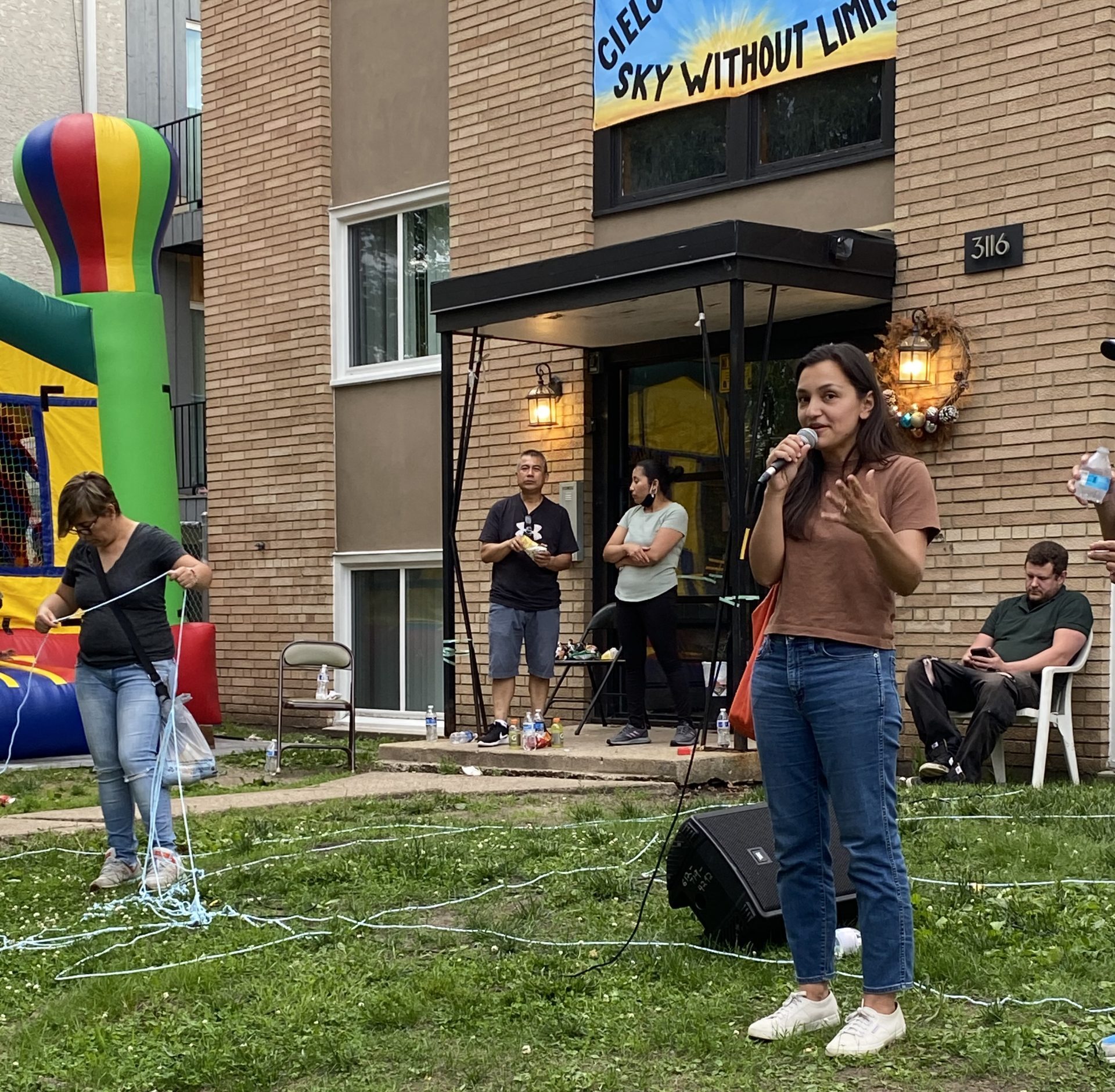
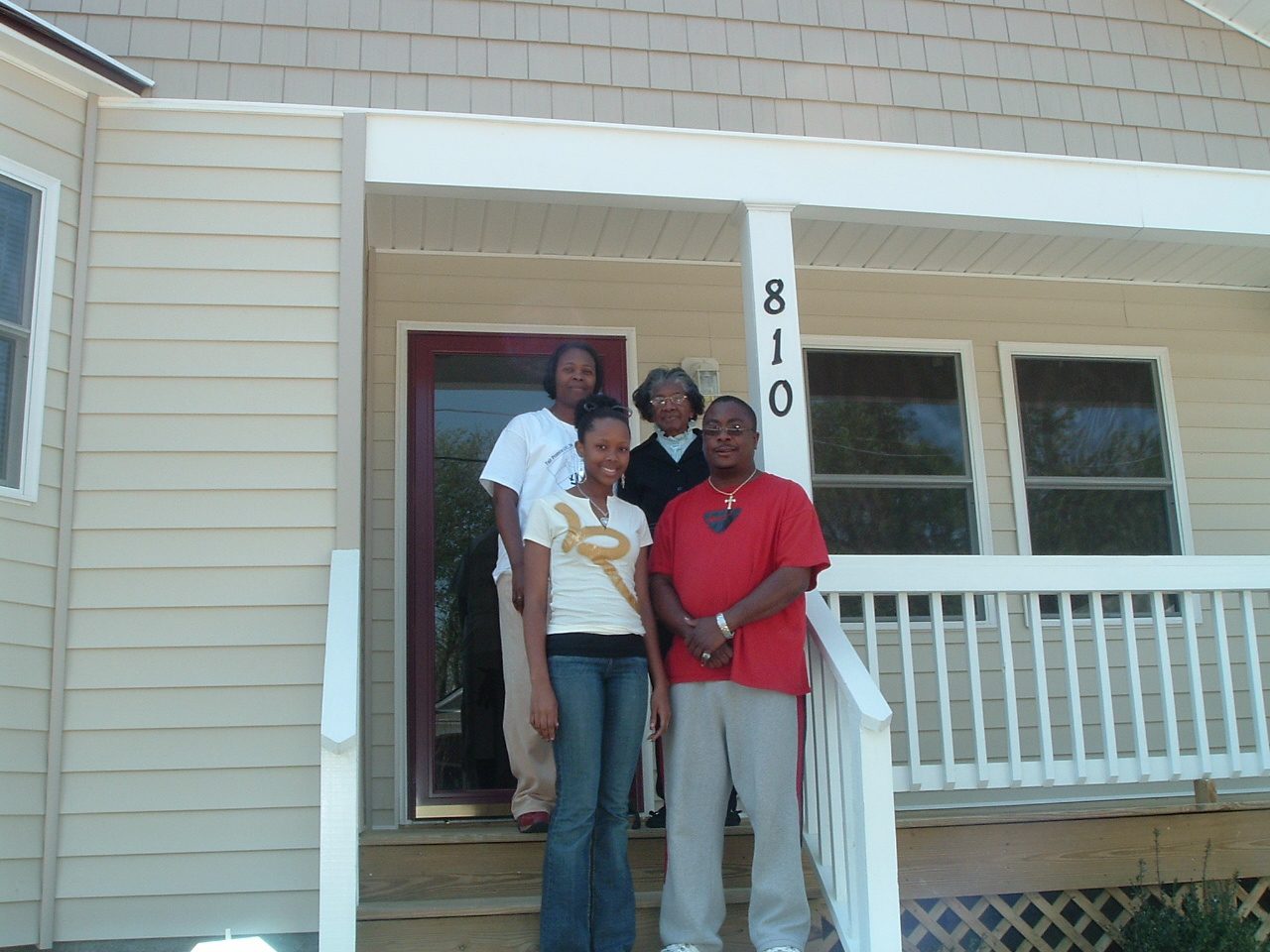
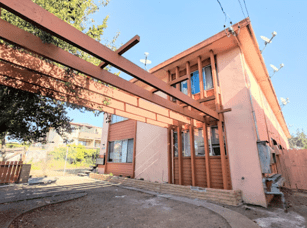
Comments